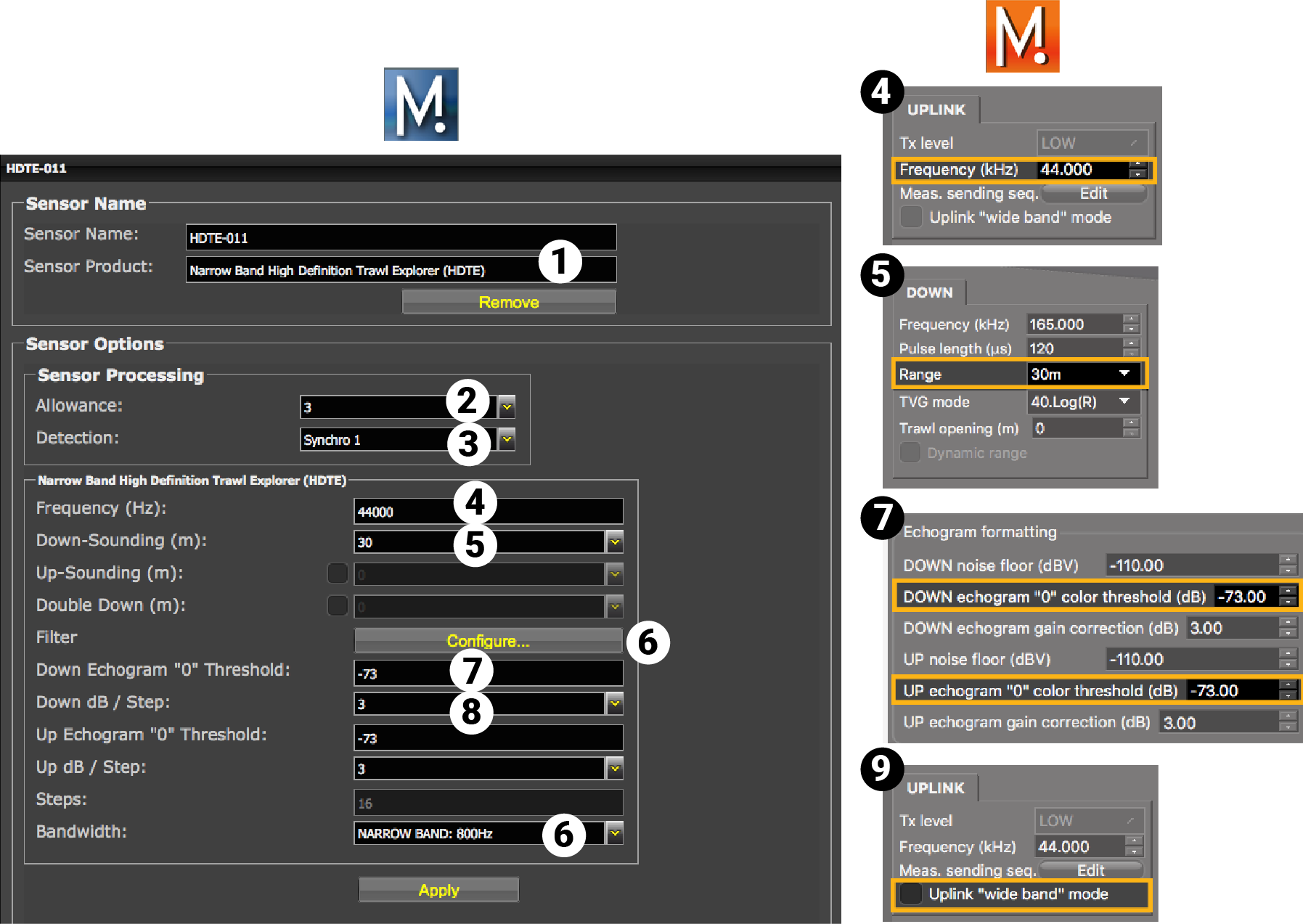Configuring the Sensor Settings
Important: Make sure the settings you enter here are the same
as in Mosa2.

| 1 | Sensor name displayed in Scala2 and its features. |
| 2 | This setting helps detecting the signal of the sensor among other sensor or echosounder
signals. Change default setting only if you have issues receiving data.
|
| 3 | This setting also helps detecting the sensor signal. Leave default setting at Synchro 1. |
| 4 | Enter the same frequency as the one entered for the uplink frequency in Mosa2. Note: In normal mode,
the HDTE
uses a 800 Hz bandwidth. When configuring other sensors, make sure there is an
interval of 200 Hz with other sensors' frequencies (before and after). If you are in wide band mode, the HDTE uses a 2400 Hz bandwidth. You also need an interval of 200 Hz before and after. |
| 5 | Range of the sounding. Depends on soundings enabled. |
| 6 |
Click Configure to change filters
applied on incoming data. Filters are particularly useful to reduce interferences on the
echogram data.
Tip: Please refer to Scala2 user
guide for more information about the filters.
|
| 7 | Helps you detecting targets on the echogram. Corresponds to Channel minimum TS in Mosa2. |
| 8 | Do not change this setting. |
| 9 | Change to WIDE BAND if you selected Uplink "wideband" mode when configuring the sensor in Mosa2. |
Click Apply when you have finished.
Results
The sensor is added to the system. You should see incoming data from the control panels, in Sensors Data. You can now configure the display of incoming data in Scala2.